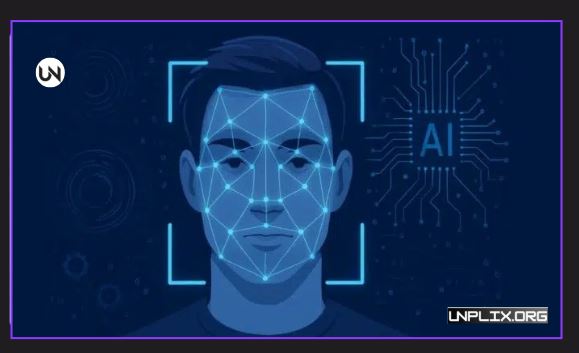Facial Recognition has quickly become one of the most talked-about technologies of our time. By 2025, its influence has expanded across industries, improving security, streamlining access, and enhancing customer experiences. This guide explains what Facial Recognition is, how it works, where it’s used, and the opportunities and challenges it brings.
Also Read: What is Microsoft Copilot AI? Features, Pricing & How to Use It (2025 Guide)
What is Facial Recognition?
Facial Recognition is a biometric technology that identifies or verifies people by analyzing their facial features. Using artificial intelligence and machine learning, it maps facial data and compares it with stored records. Unlike passwords or ID cards, it relies on physical traits, making it both harder to fake and easier to use.
How Facial Recognition Works in 2025
Modern systems follow a simple but powerful process:
1. Image Capture
A camera records a person’s face, either live or from saved data.
2. Face Detection
The system finds and isolates the face within the image.
3. Feature Extraction
Key features like the distance between the eyes, jawline, and nose are measured and turned into a unique digital code called a faceprint.
4. Face Matching
The system compares the faceprint with entries in its database to look for a match.
5. Decision Making
Algorithms generate a confidence score to verify or identify the person.
Where Facial Recognition is Used in 2025
Facial Recognition is no longer limited to security checks. Its reach now spans many industries:
1. Public Safety and Surveillance
Governments and organizations use it to monitor public areas, prevent crime, and secure restricted zones.
2. Device and Access Security
Phones, laptops, and buildings use it for password-free logins and entry.
3. Banking and Payments
Banks and digital wallets use facial scans to verify transactions and reduce fraud.
4. Healthcare
Hospitals use it for patient identification, staff access, and security in restricted spaces.
5. Retail and Marketing
Stores analyze shopping patterns and customer demographics to create tailored experiences.
6. Travel and Hospitality
Airports enable document-free boarding, while hotels use it for faster, contactless check-in.
7. Education and Workplaces
Schools and offices rely on it for attendance, exam monitoring, and secure access control.
Benefits of Facial Recognition
- High Accuracy: Advanced systems now achieve near-perfect recognition.
- Convenience: No need for passwords, cards, or physical keys.
- Flexibility: Works across multiple industries and settings.
- Enhanced Security: Biometric data is far harder to forge than traditional IDs.
Challenges and Concerns
Despite its advantages, Facial Recognition raises valid concerns:
- Privacy Risks: Fear of surveillance and unauthorized data collection.
- Bias and Errors: Some systems may misidentify people from certain demographics.
- Data Security: Biometric data requires strong protection against cyber threats.
- Lack of Regulation: Laws are still evolving to balance innovation with rights.
The Future of Facial Recognition
By 2025 and beyond, Facial Recognition is expected to become more reliable, secure, and ethically managed. Advances in AI, blockchain, and edge computing will make systems more private and transparent. Industries like smart cities, self-driving cars, and virtual environments are likely to depend on it even more.
Frequently Asked Questions (FAQs) About Facial Recognition
1. What is Facial Recognition used for in 2025?
It is used for security, banking, healthcare, retail, travel, and customer experiences.
2. How accurate is it today?
The best systems now reach accuracy levels above 99%.
3. Is it safe to use?
Yes, with proper encryption and strong data security, it’s considered safe.
4. Can it recognize faces with masks or glasses?
Modern systems are designed to work even with masks or eyewear.
5. What are the main privacy concerns?
The biggest issues include unauthorized tracking, mass surveillance, and data misuse.
6. Is it legal everywhere?
No, regulations differ across countries, and some regions have placed restrictions.
7. Can it replace passwords?
Yes, many devices and apps already use it as a primary login method.
8. How is it different from face detection?
Face detection spots a face in an image, while Facial Recognition identifies who the person is.
9. Which industries use it the most?
Security, finance, healthcare, retail, and travel lead the way in adoption.
10. What does the future look like for this technology?
It will become a cornerstone of smart cities, autonomous systems, and digital platforms, with stronger privacy protections.
Conclusion
Facial Recognition has moved from futuristic idea to everyday tool in 2025. From unlocking devices to securing airports and streamlining customer service, it is reshaping industries worldwide. But with its growth comes the need for strong privacy laws, ethical practices, and secure handling of sensitive data.
Key Points:
- Facial Recognition offers fast, accurate, and scalable identity verification.
- It is widely used in security, banking, healthcare, retail, and travel.
- Accuracy now exceeds 99% in most scenarios.
- Privacy and ethical concerns remain critical.
- The future points to deeper integration with smart cities, AI, and global digital ecosystems.
Facial Recognition in 2025 is a powerful tool. Used responsibly, it strengthens security, simplifies access, and builds trust in the digital world.




